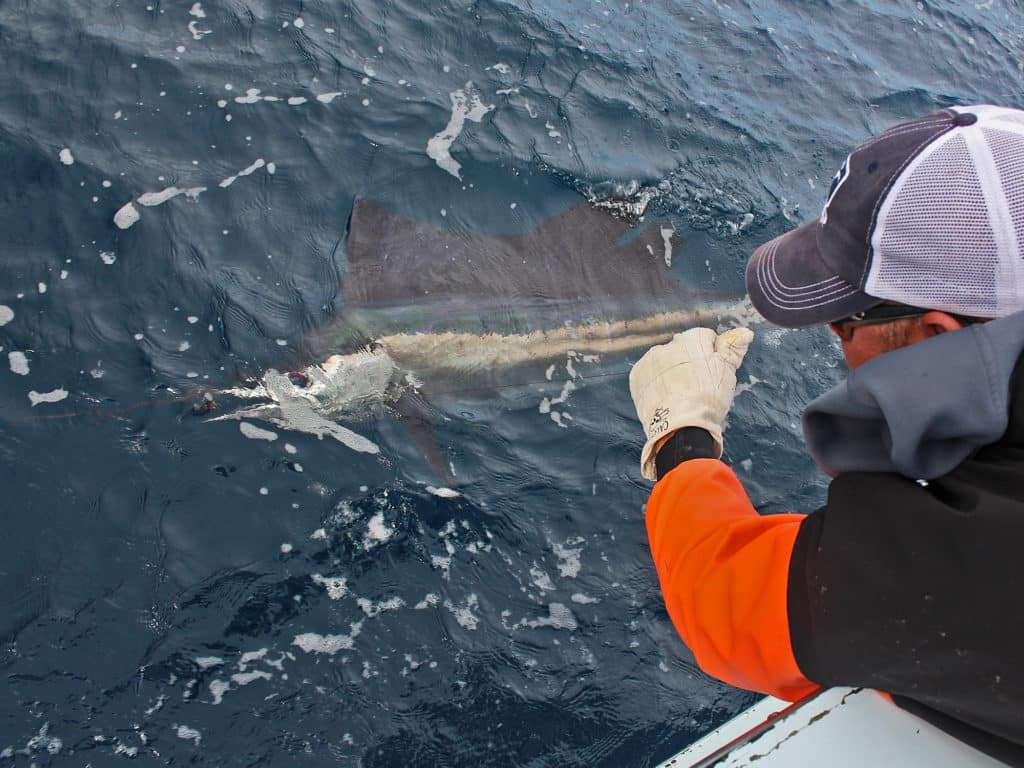
Many exciting game fish swim in our oceans. A couple favorites are legit tackle busters. Some faster or more acrobatic, others blessed with amazing power and stamina. While every angler has his or her favorites, here’s a list of 10 fish species (in no particular order) most veteran big-game fishermen would agree deserve to be recognized. Any discussion about the toughest fighters in offshore waters will touch upon species we included in our Top-10 list. Billfish and tunas make up the majority of this list, if you haven’t already guessed.
A tough fighter might not be the biggest fish in the ocean, but there is some overwhelming quality about it that makes it hard to catch. It could be the way the fish fights with leaping jumps or speedy runs. Maybe it’s an incredibly tough fish to fool into biting your lure or natural. Sometimes the fish is simply hard to target reliably because of its elusiveness. Or it could be the fighting power the fish breaks the will of the angler. Hardcore fish come in many different flavors.
Our Top 10 List of the Toughest Fighting Fish in the Ocean
- Blue Marlin
- Black Marlin
- Bluefin Tuna
- Swordfish
- Yellowfin Tuna
- Striped Marlin
- Wahoo
- Sailfish
- White Marlin
- Albacore
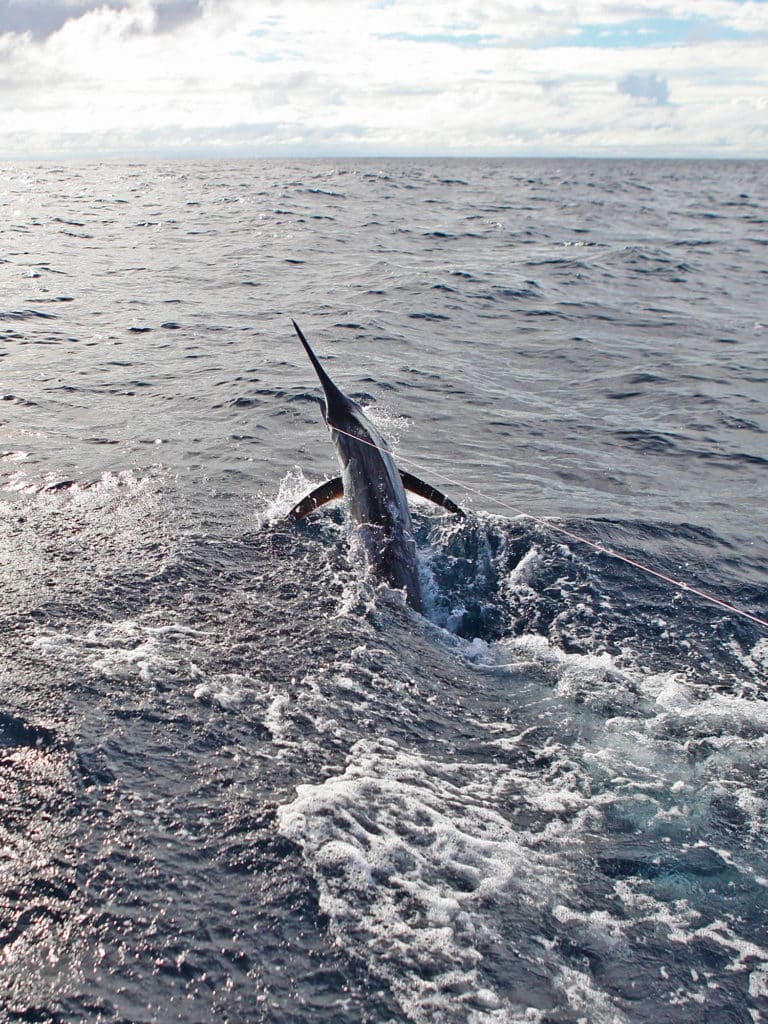
BLUE MARLIN
Equally majestic and challenging, both the Atlantic and Pacific blue marlin are known to live as long as 27 years and exceed 14 feet in length and 1,500 pounds in weight. The IGFA All-tackle World Record for Atlantic blue marlin stands at 1,402 pounds, 2 ounces, and the Pacific blue marlin at 1,376 pounds.
Highly migratory, blues often follow warm currents in the Atlantic, Pacific and Indian oceans, respectively, for thousands of miles every year, feeding on a wide range of prey that includes dolphin (mahimahi), bonito, various tuna and mackerel species, wahoo and, on occasion, even smaller billfish.
Trolling a spread of either live or rigged, dead baits produces most blue marlin hookups, but trolling lures or a combination of lures and baits is also effective. And in places where juveniles under 200 pounds abound, experienced crews help fly anglers catch their share via well-orchestrated bait-and-switch practices.
Capable of impressive leaps, and mixing in surface greyhounding and high-speed dives during the fight, blue marlin put their awesome power on display the instant they feel the hook, a reason why they are highly coveted by anglers worldwide.
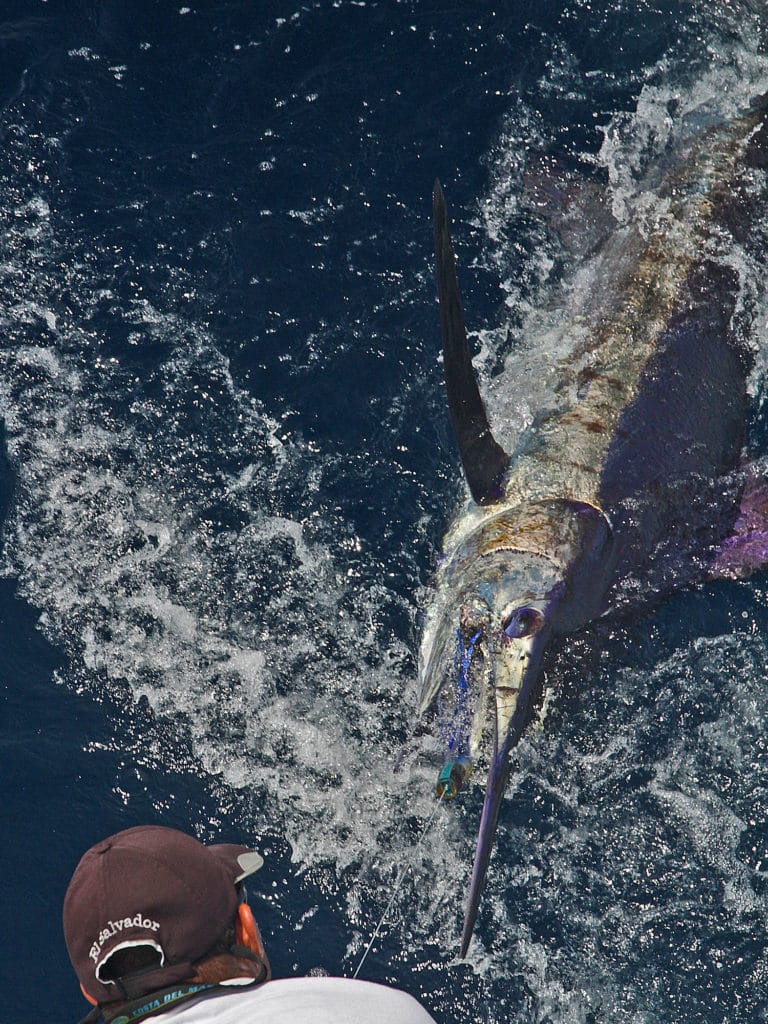
BLACK MARLIN
The only marlin that have rigid pectoral fins that won’t tuck flat against their body, black marlin occur in the tropical waters of the Indian and Pacific oceans, and are one of the four billfish species (along with swordfish and Atlantic and Pacific blue marlin) known to exceed 1,000 pounds in weight (called “granders”). In fact, the IGFA All-tackle World Record is a 1,560-pounder caught off Cabo Blanco, Peru.
Black marlin’s diet consists of squid and a number of pelagic fish, including flying fish, bonito, various tunas, mackerel, dolphin, and others, and unlike blue and striped marlin, blacks often venture onto shallow water (juveniles sometimes forage in depths of less than 20 feet in parts of Australia), adding to the great appeal of their awesome strength, stamina and acrobatic nature.
Trolling live or dead baits, or lures that resemble them, either in looks or action, are among the proven fishing methods. However, smaller black marlin are successfully targeted regularly by anglers casting plugs or flies.
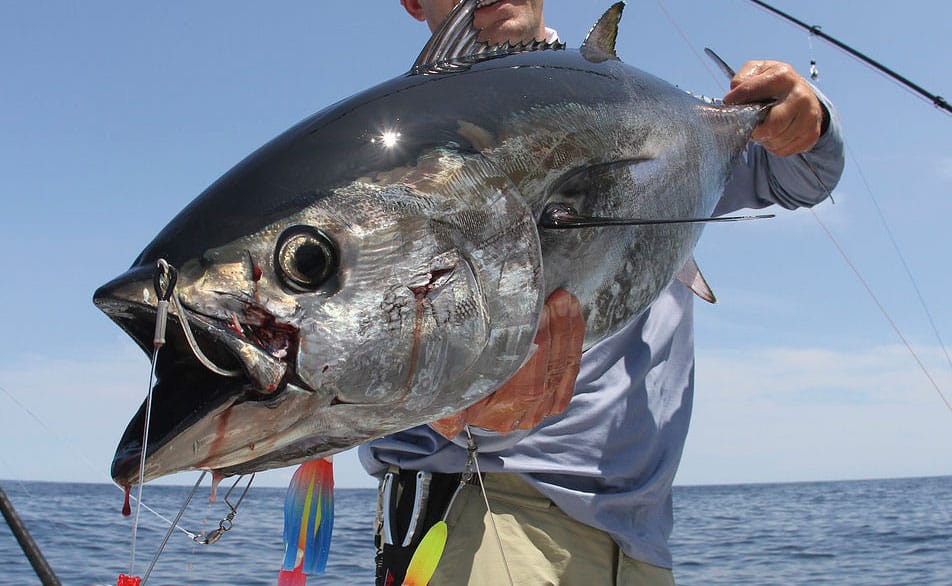
BLUEFIN TUNA
Three bluefin tuna species are recognized: Atlantic bluefin, which inhabit the subtropical and mild waters of the North Atlantic Ocean and the Mediterranean and Black seas; Pacific bluefin, which roam the Pacific and Indian oceans; and Southern bluefin, most commonly found off the southern and eastern coasts of Australia and New Zealand.
The Atlantic are the largest, the IGFA All-tackle World Record is 1,496 pounds, followed by the Pacific, the All-tackle record fish weighed 907 pounds, 6 ounces, and the Southern, the record stands at 369 pounds, 4 ounces.
Targeting schoolies of the first two species, specimens in the 50- to 100-pound class, with topwater or suspending plugs and spinning gear is becoming increasing popular, but most bluefins are chummed up and baited with chunks, or whole butterfish, sardines, menhaden, anchovies, bluefish, or mackerel, live or dead.
While some anglers take advantage of the fact that bluefin tuna often stage in depths of less than 200 feet to catch them on 50- or 80-pound stand-up gear, the larger Atlantic and Pacific bluefins (known as “giants”) — some weighing more than 1,000 pounds — are said to have the power of a freight train, which is why few anglers dare use anything lighter than 130-pound tackle for them.
Unlike the other bluefin tuna species, the Southern are usually caught by trolling or free-lining live baits, sometimes close to shore, but they are rarely taken on dead baits.
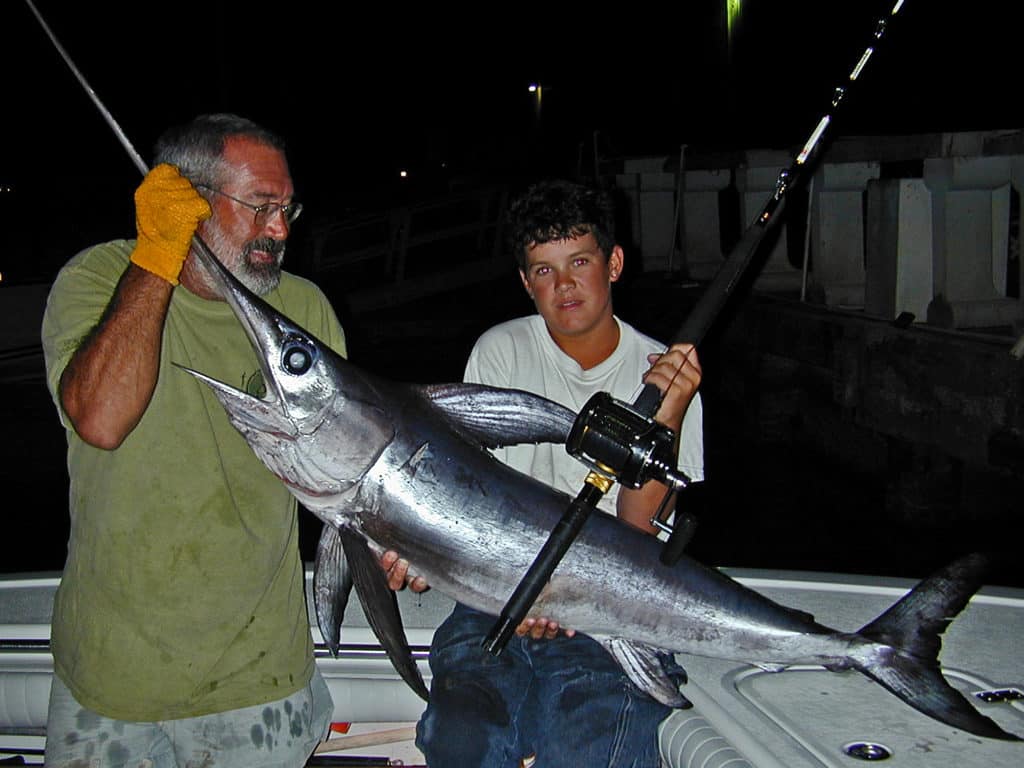
SWORDFISH
Also known as broadbill for its broad, flattened bill, which is significantly longer and wider than that of all other billfish species, the swordfish has rigid, non-retractable dorsal and pectoral fins, lacks ventral fins, and has a single, very large keel on both sides of the caudal peduncle (tail). Adults lack scales, the reason for their slick look, their big eyes excel at detecting prey at night and at great depths, and their oversized tail propels them at high rates of speed and enables astounding jumps.
Found in temperate and tropical ocean waters worldwide, swordfish are migratory, but usually travel alone. And while they are considered a deep-water game fish, some are found basking on the surface with their dorsal and tail fins out of the water. Swords use their large bill for defense — they occasionally attack boats — and to kill or stun squid, mackerel, bonito, dolphin, and various other pelagic species they prey upon.
Preferred fishing methods include drifting deep baits at night, usually rigged squid, bonito, mackerel or large mullet, lighted by small strobes or cyalume sticks, pitching live baits ahead of fish finning on top, and slow trolling live or dead baits deep with help from downriggers or weights.
Finicky and easily frightened, swords often require baits to be presented carefully and repeatedly before committing to a take, and their soft mouth makes solid hookups more of a challenge. The current IGFA All-tackle World Record is 1,182 pounds.
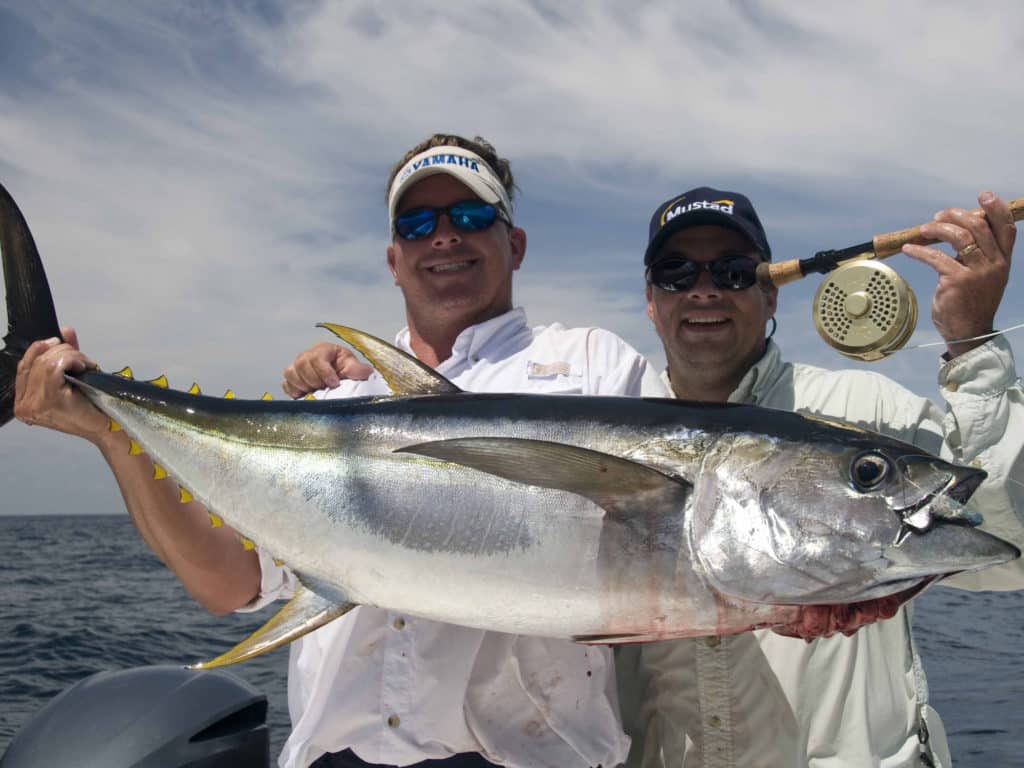
YELLOWFIN TUNA
Present in deep, warm ocean waters throughout the globe, yellowfins rely on their speed and amazing eyesight to feed on a wide variety of prey, from squid to flying fish and many other species in between. Specimens ranging from football-size schoolies to 200-pounders are often spotted jumping clear of the surface during high-speed attacks.
While fish under 20 pounds are sometimes encountered closer to shore, the larger fish frequent offshore banks, canyons and manmade structures — such as oil platforms — out in blue water, around which baitfish congregate. They’re also known to follow shrimp boats in the Gulf of Mexico.
Proven fishing methods include drifting or trolling live goggle-eyes, anchovies, sardines, tinker mackerel, hardtails (aka blue runners), trolling lures or rigged baits, anchoring and chunking, and casting topwater and suspending plugs around surface feeding fish.
A 427-pounder caught in 2012 off Cabo San Lucas, Mexico, is the current IGFA All-tackle World Record.
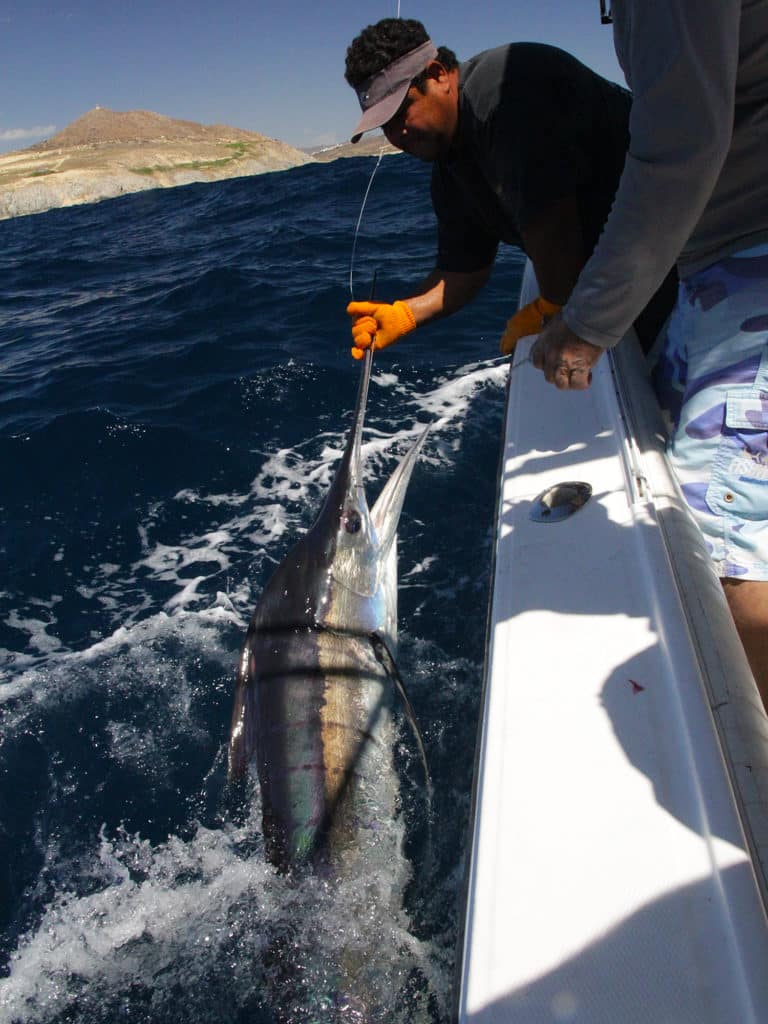
STRIPED MARLIN
An inhabitant of the warm, tropical waters of the Pacific and Indian oceans, this marlin species is renowned for its exciting aerial displays. It often hunts in packs, so the potential for double and triple hookups adds to its allure.
Although striped marlin’s preferred forage are anchovies, mackerel, goggle-eyes (called caballitos or ojones in latin America), sauries, flying fish, and squid, they are opportunistic feeders that rarely pass up an easy meal, which makes them great candidates for a number of angling tactics, ranging from trolling natural baits or lures, to sight-casting liveys at specimens finning on the surface, and bait-and-switching to trick them into striking flies.
While stripes average 100 to 200 pounds in most places, the current IGFA All-tackle World Record is 494 pounds, and the waters off New Zealand seem to produce 400-pounders with some frequency.
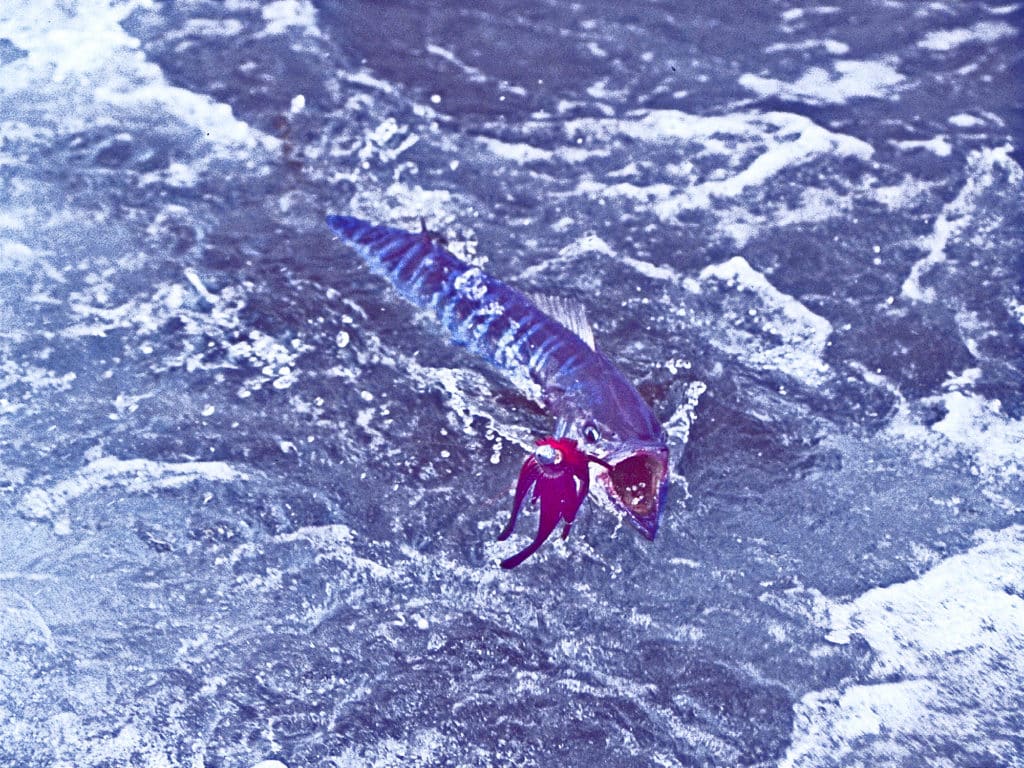
WAHOO
Easily identified by its purple tiger stripes, and famous for its razor-sharp dentures and blazing speed (said to top 50 mph), wahoo is a seasonally migratory species present in warm, tropical waters worldwide.
Found mostly alone or in small packs around wrecks and below weed lines and other sizeable floating debris, wahoo are also known to congregate in large numbers along major drop-offs and offshore banks at certain times of year.
While most of the wahoo caught by anglers fall within the 25- to 60-pound range, much larger specimens are caught consistently in top wahoo destinations like the Bahamian islands of San Salvador and Cat, Turks and Caicos, Bermuda and Mexico’s Baja Peninsula, where the current IFGA All-tackle record, a whopping 184-pounder, was caught.
Although chumming with live bait and chunking pays off in certain areas, wahoo generally respond best to fast-trolled lures and baits, especially those presented as part of a spread that includes 5 or more offerings at staggered distances and depths, aided by downriggers, planers and wire lines.
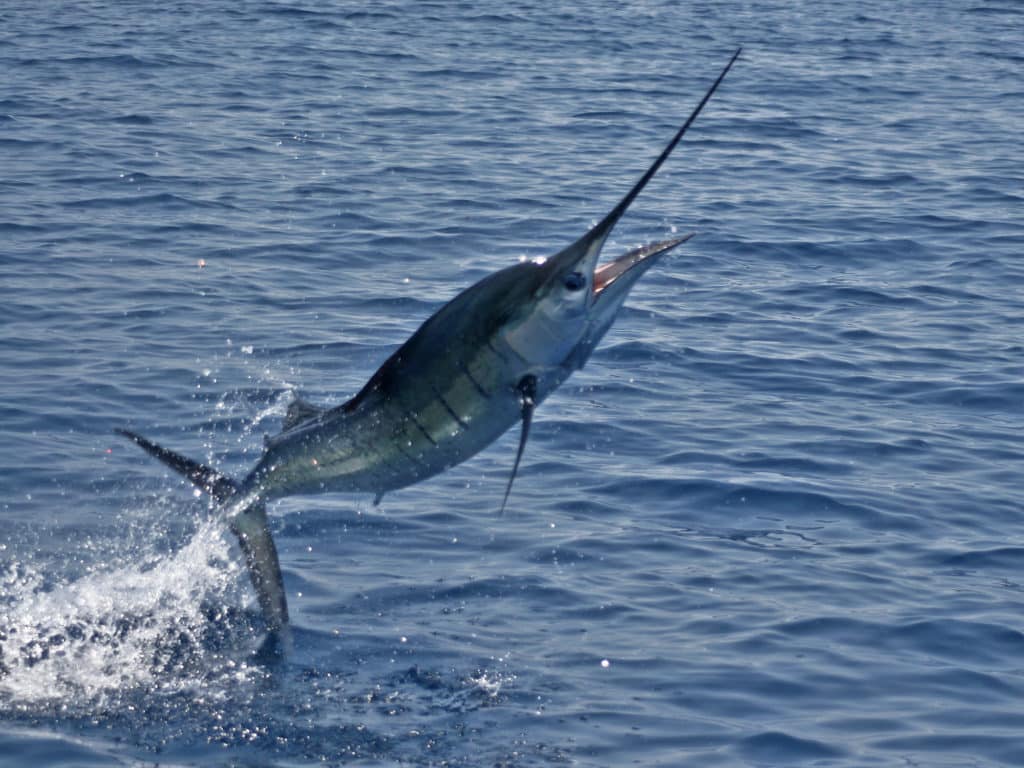
SAILFISH
Like blue marlin, two species — an Atlantic and a larger Pacific — are recognized, both easily identified by their sail-like dorsal fin, which they often use to corral baitfish in cooperation with other members of a pack.
While the two sailfish species are seasonally migratory and known to travel long distances, alone or in groups, Pacifics inhabit tropical and subtropical waters of the Pacific and Indian oceans, while the Atlantics are confined to the Atlantic Ocean and the Caribbean and Mediterranean seas.
Often spotted finning on the surface, sails are prone to exciting aerial displays and they prey on a wide range of forage, including small bonito and mackerel, goggle-eyes, ballyhoo, sardines, pilchards, herring, blue runners, squid and others, mostly along offshore banks, current eddies and the edges of reefs, as shallow as 30 feet in places like South Florida.
While sails will attack trolled lures, trolling live and rigged, dead baits produces more hookups. But drifting live baits at various depths, including some suspended on the surface by kites, a technique popularized in Florida, consistently yields high release numbers. And more specialized tactics, like pitching baits or casting flies at fish teased with hook-less lures or baits, also pay high dividends, especially in areas where sailfish are abundant and more likely to hunt in packs.
Though the average Pacific sailfish weighs 100 to 120 pounds, the IGFA All-tackle World Record is 221 pounds. Meanwhile, Atlantics average 45 to 65 pounds, and the all-tackle record is 142 pounds, 6 ounces.
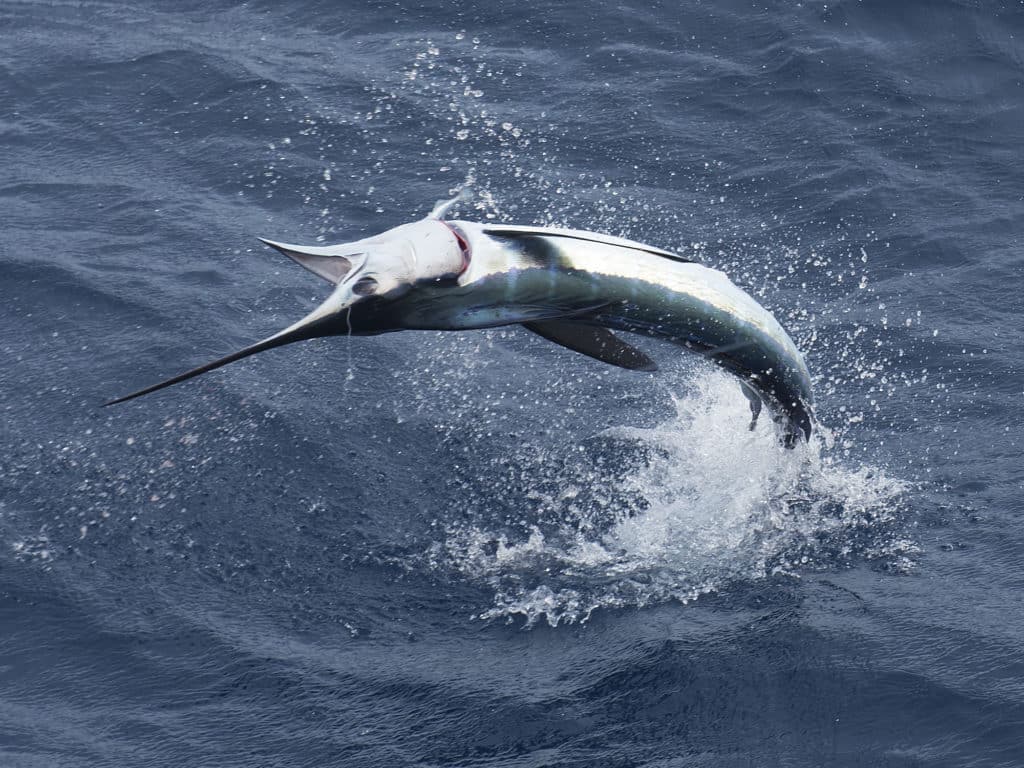
WHITE MARLIN
Although this is a migratory species found primarily in deep, warm tropical waters, white marlin are frequently drawn closer to shore by the prospect of intercepting schooling baitfish, and in certain areas, it competes for food with Atlantic sailfish and other pelagic game fish.
The rounded dorsal makes whites easy to differentiate from other marlin species. The quick ID comes in handy in locations like Punta Cana, Dominican Republic, where whites share their offshore haunts with the small blue marlin that abound in the region.
While the average white ranges in weight from 40 to 60 pounds, the IGFA All-tackle World Record, an impressive fish that weighed 181 pounds, 14 ounces, was caught off Vitoria, Brazil, where white marlin of extraordinary size are caught with some regularity.
Fast, agile and very acrobatic, the white marlin is truly a worthy adversary on light tackle. Conventional trolling with a variety of live and rigged, dead baits, including ballyhoo, mullet, small mackerel, herring and others, is the preferred tactic. However, strip baits and lures claim their share of fish and are often used to tease white marlin within range of anglers pitching baits or casting flies.
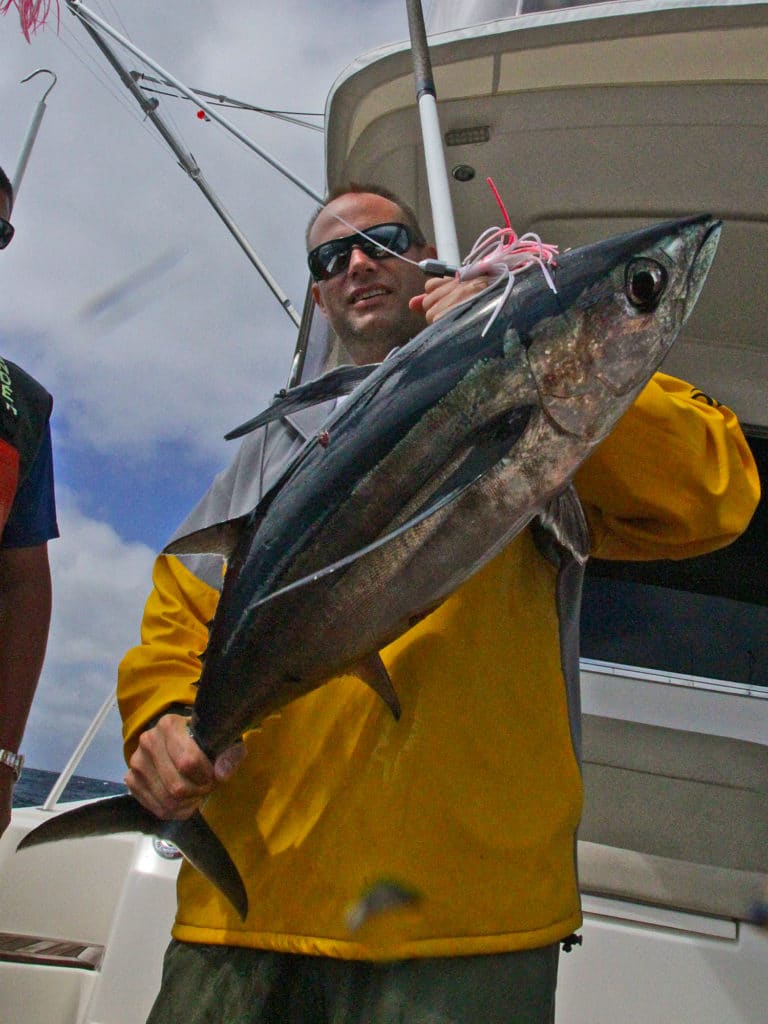
ALBACORE
Primarily an inhabitant of the world’s warm, tropical waters, albacore (also known as longfin tuna) is a highly migratory species that’s always on the move, like the rest of the tunas, and makes seasonal migrations into colder zones like New England, southern Brazil and the northern Gulf of Mexico.
Full of fight and endowed with speed and stamina, albacore is considered an excellent light-tackle game fish. Popular methods to target albacore include trolling with feathers, spoons, cigar plugs and various high-speed lures, as well as with live or rigged anchovies, sardines, mullet, herring, and other small baitfish or squid.
The long pectoral fins (they reach beyond the anal fin) and a more slender body than other tuna species are good identifiers. And while the average specimens caught by most anglers fall in the 25- to 40-pound class, the current IGFA All-tackle World Record is 88 pounds, 2 ounces, and was set back in 1977 off Grand Canary Island.









